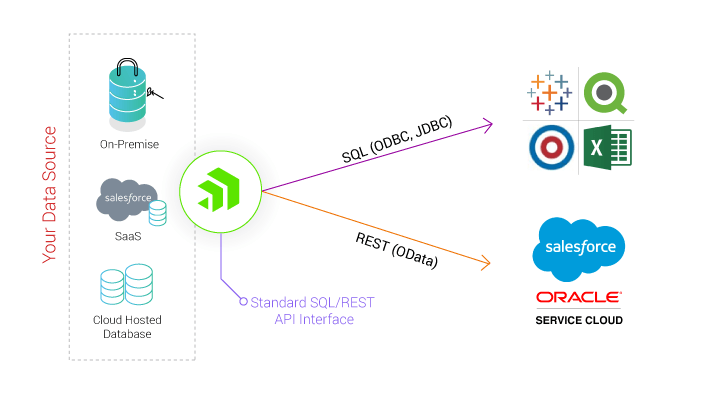N
Nishanth Kadiyala
Guest
Wayne Eckerson and Stephen Smith of the Eckerson Group evaluate all the options that cloud ISVs need to explore to support their customers’ analytics needs.
Cloud applications in every industry are faced with increased demands for new and advanced analytics. Enterprises and end-users are becoming increasingly capable in exploring new sources of data before making any key business decisions. A recent trend among cloud ISVs is to embed analytics into their applications.
In this paper, Wayne Eckerson and Stephen Smith compare the three options that cloud ISVs are currently facing:
Download Open vs Embedded Analytics now to find out which strategy is best for you and your customers.
Embedded BI Cannot Solve Every Use Case
Embedded BI is critical to many business applications and brings core analytics functions closer to your end-user. However, since data today is spread across so many different applications, your end-user can’t meet all their analytics requirements based on the embedded BI insights alone.
The authors further explain that no single analytics product can solve all the business use cases. Consequently, embedding a specific third-party BI tool means vendor lock-in and that your customers must custom develop a way to analyze your data in an external analytics tool of their choice.
You can learn more about this in the webinar: Open vs Embedded Analytics for Cloud Apps or read the Datanami article, Welcome to the Open Analytics Era.
Expose Your Cloud App for Open Analytics
Wayne and Stephen observe that whether or not a cloud ISV embeds analytics into their product, it becomes imperative that the ISV open its analytics for more complex analytics use cases than their customers may be interested in. Users can now connect to multi-tenant analytics databases or APIs in the cloud from BI tools such as Tableau, Power BI, Qlik, or MicroStrategy, and language tools such as R, Python, Matlab, SAS or SPSS.

To work towards delivering open analytics, one of the ways you could get started is to build a REST interface yourself. But REST doesn’t come with a standard specification, so you need to follow best practices in REST API design for your application. This means you must provide appropriate API documentation and customer support.
Further, it may be required to open ports or provide VPN access for customers accessing the analytics database behind the cloud firewall. This approach introduces complexity and none of it is scalable! The authors thus suggest using standards-based SQL/REST interfaces and data gateways to tackle this problem.
To understand more about how you can adopt standards-based open analytics, read Open vs Embedded Analytics:
Download whitepaper
Continue reading...
Cloud applications in every industry are faced with increased demands for new and advanced analytics. Enterprises and end-users are becoming increasingly capable in exploring new sources of data before making any key business decisions. A recent trend among cloud ISVs is to embed analytics into their applications.
In this paper, Wayne Eckerson and Stephen Smith compare the three options that cloud ISVs are currently facing:
- Embedding Analytics: ISVs can embed a 3rd party analytics product, white label it and provide some basic analytics functions.
- Open Analytics: ISVs can expose an API that enables customers to connect the cloud application’s data to the analytical tool of their choice.
- Hybrid: They can support both strategies.
Download Open vs Embedded Analytics now to find out which strategy is best for you and your customers.
Embedded BI Cannot Solve Every Use Case
Embedded BI is critical to many business applications and brings core analytics functions closer to your end-user. However, since data today is spread across so many different applications, your end-user can’t meet all their analytics requirements based on the embedded BI insights alone.
The authors further explain that no single analytics product can solve all the business use cases. Consequently, embedding a specific third-party BI tool means vendor lock-in and that your customers must custom develop a way to analyze your data in an external analytics tool of their choice.
You can learn more about this in the webinar: Open vs Embedded Analytics for Cloud Apps or read the Datanami article, Welcome to the Open Analytics Era.
Expose Your Cloud App for Open Analytics
Wayne and Stephen observe that whether or not a cloud ISV embeds analytics into their product, it becomes imperative that the ISV open its analytics for more complex analytics use cases than their customers may be interested in. Users can now connect to multi-tenant analytics databases or APIs in the cloud from BI tools such as Tableau, Power BI, Qlik, or MicroStrategy, and language tools such as R, Python, Matlab, SAS or SPSS.

To work towards delivering open analytics, one of the ways you could get started is to build a REST interface yourself. But REST doesn’t come with a standard specification, so you need to follow best practices in REST API design for your application. This means you must provide appropriate API documentation and customer support.
Further, it may be required to open ports or provide VPN access for customers accessing the analytics database behind the cloud firewall. This approach introduces complexity and none of it is scalable! The authors thus suggest using standards-based SQL/REST interfaces and data gateways to tackle this problem.
To understand more about how you can adopt standards-based open analytics, read Open vs Embedded Analytics:
Download whitepaper
Continue reading...
